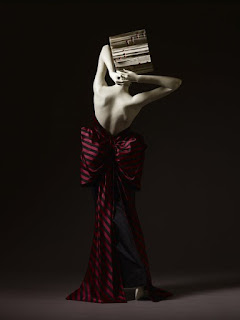Published in The London Word http://www.thelondonword.com/2012/12/five-questions-i-asked-santa/
Christmas is around the corner and my anxiety levels are rising. I’ve promised – yet again – to spend it with the family. It’ll be super-duper to see them. Really, it will. For a few days, I won’t have to do any cooking or cleaning. I will shlep around in my PJs. I will eat as much as I want, and add a dollop or two of double cream to everything. (If everyone else is doing it, the calories cancel each other out.) And I might actually get the chance this time round to rummage in the attic for that missing box of LPs.
Christmas is around the corner and my anxiety levels are rising. I’ve promised – yet again – to spend it with the family. It’ll be super-duper to see them. Really, it will. For a few days, I won’t have to do any cooking or cleaning. I will shlep around in my PJs. I will eat as much as I want, and add a dollop or two of double cream to everything. (If everyone else is doing it, the calories cancel each other out.) And I might actually get the chance this time round to rummage in the attic for that missing box of LPs.
Is it heaven on earth? It might be – if it weren’t for all
the talking. The one-on-one questions from relatives – How’s that book coming
along? Oh, still no publisher? Have
you got a proper job yet? Does it pay?
– I can just about handle. From years of experience, I’ve realized that
smiling, nodding and praising said relative’s Labradoodle, Christmas tofurky, exfoliated
chin, and general outlook on life will win me points and get the attention away
from me.
No, it’s the general barrage of noise that I’m scared of.
The onslaught, an incessant nattering, that starts at 5.30am on Christmas Eve
and then continues all day and well into and beyond Boxing Day. I just know
that Auntie B will tell that ginseng story again that will include a series of racial
slurs cunningly disguised as worldly wisdom. Cousin J will show me his boils. And
Uncle T will make me a spread-sheet on all the ways I’m going wrong in my life.
And they will do so all at the same time. All in the same ear.
So, when I bumped into Santa the other day in TGI Friday, a
little red faced and frost-bitten from all his toy-shop appearances and global
warming respectively, I asked him – Why do I put myself through this every
year?
Me: Santa, why must I shop till I drop at
Christmas?
Santa (with a saucy
smile): Because it is the sexy thing to do! Do you know my favourite author,
my dear? It is Sophia Kinsella! The woman has made living on a permanent
over-draft – with masses of unpaid bills and mounting credit card debt – sexy!
If before the Shopaholic series you
felt guilty and a little dirty to do all that shopping, now you feel helplessly
feminine, charmingly kooky, and flighty – but in an endearing way. And you know
how it goes. You’ve asked your mum to tell all the relatives not to buy you
presents, because you’re broke (yes, again) and you can’t afford to
reciprocate. But, you know, everyone
will get you a present. They will say
that it doesn’t matter in the least that you didn’t get them anything, but it will!
If I were you, cupcake, I’d pop in at Lush on the way out and get everyone some
soap. It’s good for the economy.
Me: Is
it good for the economy?
Santa (taking a few
sips of his appletini): Of course! We must maintain the status quo! Imagine
for a minute that Mr. Bank Manager didn’t earn five hundred thousand pounds
this year, and you, doll – a writer, did you say? Spiffing! Really, top notch!
Here, have a free mince pie, you look a little hungry. Where was I? Yes, if you
earned more than, say, seven thousand a year, or if you didn’t have to pay the
editor just to publish your articles, and if Mr. Bank Manager didn’t live in a
penthouse overlooking Hyde Park, where would
we all be? The economy has taken a beating lately, and the government wants us
to spend so we can go back to being in denial. It is natural to be in denial.
Clarity would only bring us down!
Me: Err, right. Okay, so why must I eat till I
pop?
Santa: It beats
me how you’re supposed to know when to stop! Once you start with the turkey and
the roast potatoes, move on through the extra stuffing to the pudding and the
cream, why, you have to come back to the potatoes!
Me: Why must I put cucumber in my wine and egg
in my nog?
Santa (now a little
woozy): Perfection is boring, my little lollipop. Excess, excess! Celebrate
excess!
Me: Gotcha. Then, why must I drink till I – Oh,
never mind, I already know the answer to that one…







































